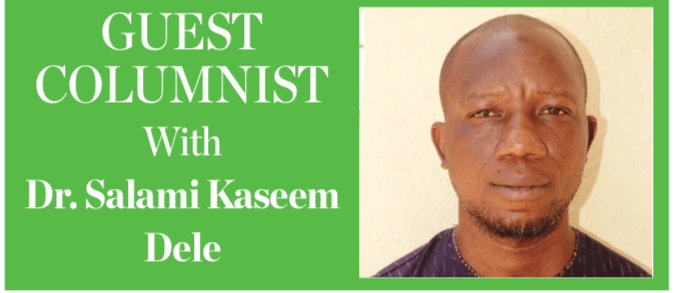BUILDING RESILIENCE AGAINST FLOODS: THE MOKWA EXPERIENCE

The Mokwa flood, a devastating disaster in Niger State, Nigeria, resulted from heavy rainfall that caused the River Niger to overflow, submerging homes, infrastructure, and agricultural land. The floodwaters ravaged the community, claiming lives and displacing thousands. The disaster highlighted the region’s vulnerability to climate-related events and the need for effective disaster preparedness and mitigation measures. Authorities and humanitarian organizations responded with rescue efforts, providing relief materials and temporary shelter to affected individuals. The incident underscores the importance of sustainable environmental management and infrastructure development to reduce flood risks. It also emphasizes the need for community awareness and education on flood preparedness and response. The Mokwa flood serves as a wake-up call for stakeholders to prioritize disaster risk reduction and management. Collaborative efforts are essential to mitigate the impact of future floods and ensure the resilience of communities. The incident’s impact on lives, livelihoods, and infrastructure necessitates a comprehensive approach to address the root causes and consequences of flooding in the region. Learning from this disaster, communities can build back stronger and more resilient. Effective measures can reduce the risk of future floods.
The Mokwa flood was caused by heavy rainfall that led to the overflow of the River Niger, exacerbated by a combination of factors including inadequate infrastructure, poor urban planning, and environmental degradation. The river’s overflow was further compounded by the release of excess water from upstream dams, catching downstream communities off guard. Additionally, the encroachment of waterways, deforestation, and siltation of river channels reduced the river’s capacity to contain heavy rainfall, increasing the risk of flooding. Climate change also played a role, as altered rainfall patterns and increased precipitation intensity contributed to the severity of the flood. Human activities such as poor agricultural practices, lack of effective flood control measures, and inadequate emergency preparedness further exacerbated the impact of the flood, resulting in significant loss of life, displacement of people, and destruction of infrastructure and agricultural land. The interplay of these natural and human-induced factors created a perfect storm that led to the devastating Mokwa flood, highlighting the need for sustainable environmental management and effective disaster preparedness measures to mitigate future flood risks in the region.
The devastating flood in Mokwa, Niger State, has resulted in a significant loss of life. The confirmed death toll has risen to 153, with reports indicating that more bodies are still being recovered. The death toll had previously been reported to be over 100, with varying sources citing figures such as 111, 115, or 151 fatalities. The rising death toll underscores the severity of the disaster and the need for sustained search and rescue efforts.
The flood has caused widespread displacement, affecting approximately 3,018 individuals from 503 households. Many of these individuals have been left homeless after the floodwaters submerged around 3,000 homes, leaving them without shelter or access to basic necessities. The displacement has put a significant strain on local resources, highlighting the need for emergency shelter and humanitarian assistance. The flooding has caused extensive destruction to critical infrastructure, including the damage of three bridges. This has disrupted transportation networks, making it challenging for rescue teams to access affected areas. The destruction of infrastructure and agricultural land will likely have long-term economic and social implications for the affected communities. The Mokwa flood had significant economic and socio impacts on the affected communities. The destruction of infrastructure, including roads, bridges, and homes, disrupted economic activities and led to substantial financial losses. The flood also affected over 10,000 hectares of paddy fields and croplands, impacting regional food supply chains and exacerbating food security concerns. Socio-economically, the displacement of thousands of individuals strained community resources, and the trauma experienced by survivors may have long-term psychological effects. The loss of livelihoods and assets further increased poverty and vulnerability. The incident highlighted the need for sustainable economic development, social protection, and community resilience-building initiatives. The economic and socio impacts of the flood underscore the importance of investing in disaster risk reduction and management measures to mitigate the effects of future disasters and ensure the well-being of affected communities. This requires a comprehensive approach to support recovery and rebuild resilience.
The Tiffin Maza and Anguwan Hausawa districts of Mokwa have been identified as the most severely affected areas, with extensive damage reported. These areas have borne the brunt of the flooding, with homes, infrastructure, and agricultural land severely impacted. The affected communities are in dire need of humanitarian assistance, including food, shelter, and medical care, to alleviate their suffering and support their recovery.
In response to the disaster, the Niger State Emergency Management Agency (NSEMA) and National Emergency Management Agency (NEMA) have launched comprehensive search, rescue, and humanitarian response efforts. The agencies are deploying relief materials and providing temporary shelter assistance to affected individuals. The rescue efforts are ongoing, with teams working tirelessly to locate missing persons, provide medical care, and distribute essential supplies.
Collaborative efforts are essential to mitigate the impact of floods. Two countries sharing transboundary waters should work together to establish effective flood warning systems, coordinate emergency response plans, and implement sustainable water management practices. Governments should invest in infrastructure development, such as dams, levees, and flood-resistant construction, and enhance disaster preparedness by conducting regular drills and educating communities on flood risks. Non-governmental organizations (NGOs) should provide humanitarian aid, support community resilience, and promote flood risk reduction initiatives. Individuals can contribute by adopting flood-resistant practices, staying informed about flood risks, and participating in community-based initiatives. By working together, countries, governments, NGOs, and individuals can reduce the risk and impact of floods, protect lives and livelihoods, and build resilient communities. Effective collaboration and collective action can help mitigate the devastating effects of floods and promote sustainable development in flood-prone areas. This collective effort is crucial for disaster risk reduction.
